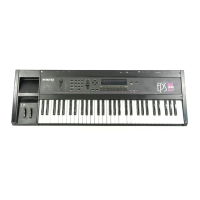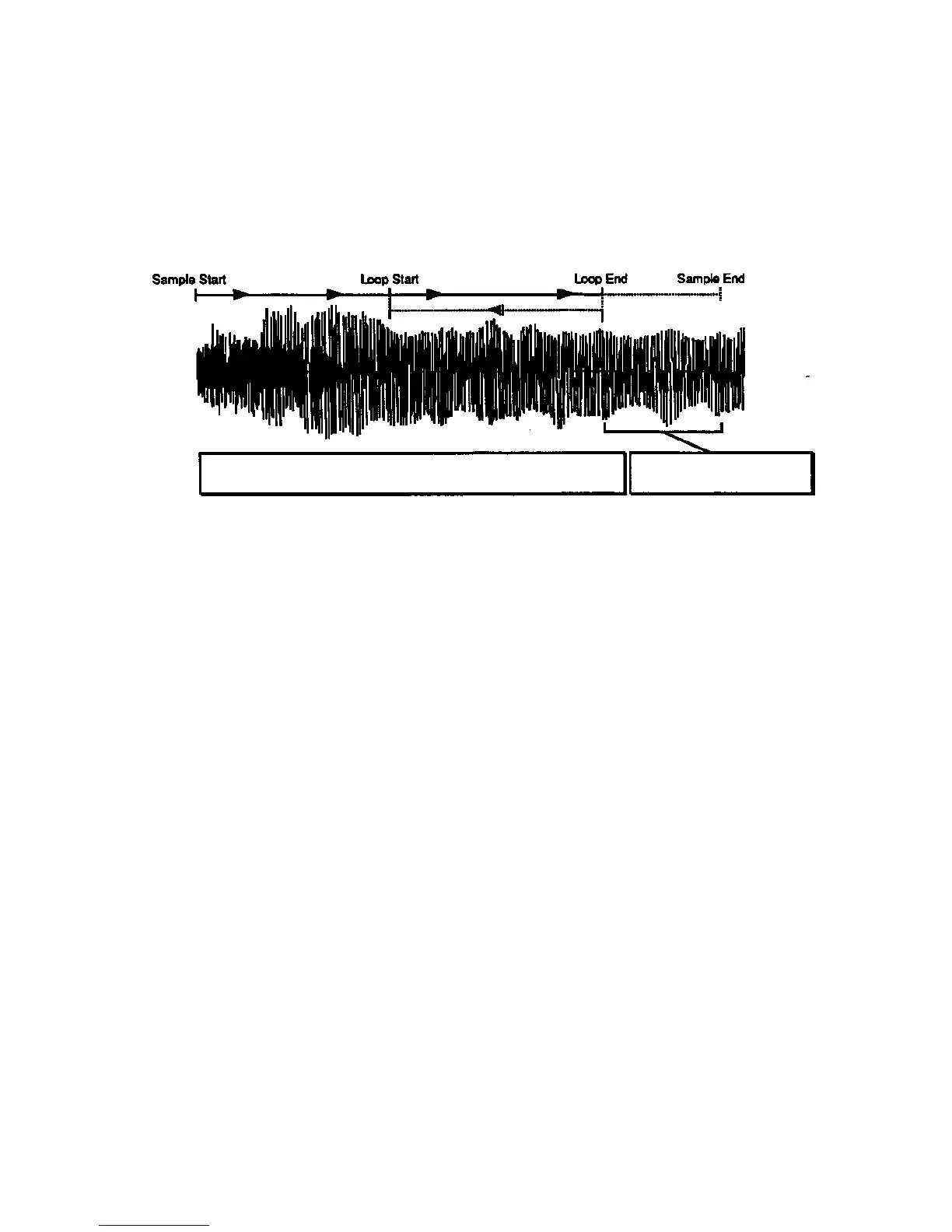EPS-16 PLUS Musician's Manual Section 5 — Sampling
Long Loops
If a single-cycle loop doesn't work for a particular sound, try a longer loop. The
idea is the same—a segment of the sound is repeated again and again—but the
long loop encompasses many cycles of the sound. Long loops retain the tonal
complexity and sense of "movement" in the original sound, and will therefore
work better for sounds like vocals, strings, flutes, stacked synth sounds, etc.
There is no one simple procedure for getting a perfect long loop every time—it all
depends on the sound. Some sounds are easy to loop; other sounds seem to defy
all attempts to find a good loop. Especially difficult to loop are those sounds
whose timbre and volume change radically over time. You'll find, however, that
the EPS-16 PLUS provides a wide variety of tools for getting the best possible
results with even the most difficult sounds. By following the guidelines below
(and not being afraid to experiment) you should be able to get an acceptable loop
on virtually any sample.
• The AUTO-LOOP FINDING parameter should be on when looking for a long
loop.
• Sample a sound, play the root key, and set the loop mode to MODE=LOOP
FORWARD.
• Scroll to the LOOP START parameter, underlining the coarse adjust (in
parentheses), and move the loop start forward past the initial attack of the
sound. Try starting with a value somewhere between 15 and 40 percent Hold
down a key and listen to the loop.
• Scroll to the LOOP END parameter, again underlining the coarse adjust. While
holding down a key, use the Data Entry Slider to move the loop end back
towards the loop start. The closer to the loop start it gets (that is, the shorter the
loop) the more noticeable the loop will sound. The idea is to find the shortest
possible loop (to conserve memory) which doesn't sound obviously "looped."
• While holding down a key you can scroll back and forth between the LOOP
START and LOOP END, changing the coarse and fine adjust for each, listening
to how different parts of the sound loop.
Looping
5 - 15
Once it reaches the Loop End the wave returns instantly to the Loop Start
and plays the loop segment over and over until the key is released
Data after the Loop End can be
truncated to conserve memory

